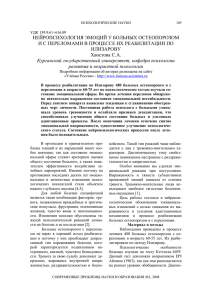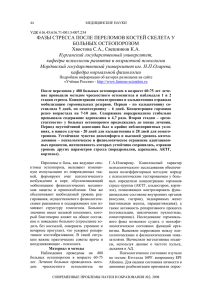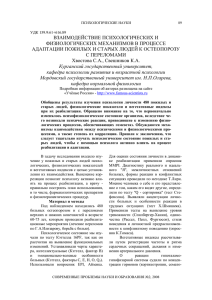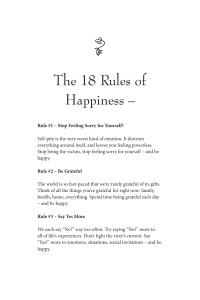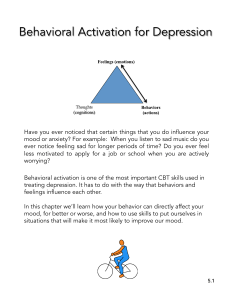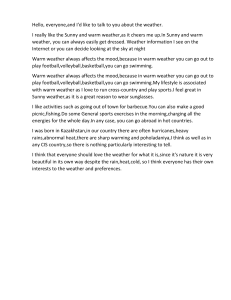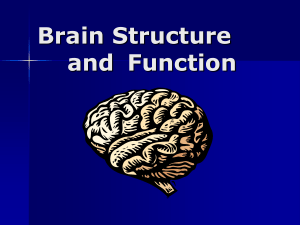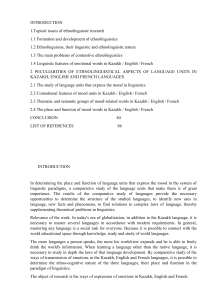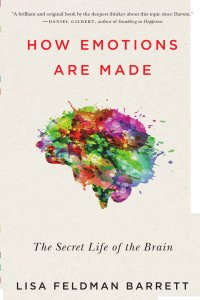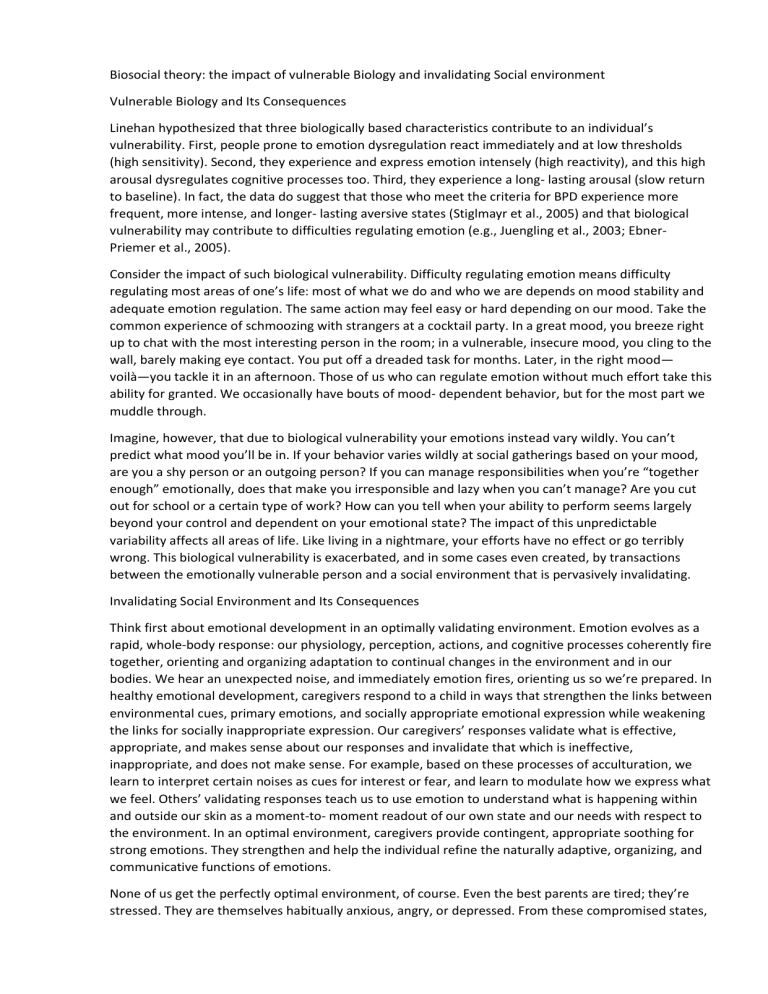
Biosocial theory: the impact of vulnerable Biology and invalidating Social environment Vulnerable Biology and Its Consequences Linehan hypothesized that three biologically based characteristics contribute to an individual’s vulnerability. First, people prone to emotion dysregulation react immediately and at low thresholds (high sensitivity). Second, they experience and express emotion intensely (high reactivity), and this high arousal dysregulates cognitive processes too. Third, they experience a long- lasting arousal (slow return to baseline). In fact, the data do suggest that those who meet the criteria for BPD experience more frequent, more intense, and longer- lasting aversive states (Stiglmayr et al., 2005) and that biological vulnerability may contribute to difficulties regulating emotion (e.g., Juengling et al., 2003; EbnerPriemer et al., 2005). Consider the impact of such biological vulnerability. Difficulty regulating emotion means difficulty regulating most areas of one’s life: most of what we do and who we are depends on mood stability and adequate emotion regulation. The same action may feel easy or hard depending on our mood. Take the common experience of schmoozing with strangers at a cocktail party. In a great mood, you breeze right up to chat with the most interesting person in the room; in a vulnerable, insecure mood, you cling to the wall, barely making eye contact. You put off a dreaded task for months. Later, in the right mood— voilà—you tackle it in an afternoon. Those of us who can regulate emotion without much effort take this ability for granted. We occasionally have bouts of mood- dependent behavior, but for the most part we muddle through. Imagine, however, that due to biological vulnerability your emotions instead vary wildly. You can’t predict what mood you’ll be in. If your behavior varies wildly at social gatherings based on your mood, are you a shy person or an outgoing person? If you can manage responsibilities when you’re “together enough” emotionally, does that make you irresponsible and lazy when you can’t manage? Are you cut out for school or a certain type of work? How can you tell when your ability to perform seems largely beyond your control and dependent on your emotional state? The impact of this unpredictable variability affects all areas of life. Like living in a nightmare, your efforts have no effect or go terribly wrong. This biological vulnerability is exacerbated, and in some cases even created, by transactions between the emotionally vulnerable person and a social environment that is pervasively invalidating. Invalidating Social Environment and Its Consequences Think first about emotional development in an optimally validating environment. Emotion evolves as a rapid, whole-body response: our physiology, perception, actions, and cognitive processes coherently fire together, orienting and organizing adaptation to continual changes in the environment and in our bodies. We hear an unexpected noise, and immediately emotion fires, orienting us so we’re prepared. In healthy emotional development, caregivers respond to a child in ways that strengthen the links between environmental cues, primary emotions, and socially appropriate emotional expression while weakening the links for socially inappropriate expression. Our caregivers’ responses validate what is effective, appropriate, and makes sense about our responses and invalidate that which is ineffective, inappropriate, and does not make sense. For example, based on these processes of acculturation, we learn to interpret certain noises as cues for interest or fear, and learn to modulate how we express what we feel. Others’ validating responses teach us to use emotion to understand what is happening within and outside our skin as a moment-to- moment readout of our own state and our needs with respect to the environment. In an optimal environment, caregivers provide contingent, appropriate soothing for strong emotions. They strengthen and help the individual refine the naturally adaptive, organizing, and communicative functions of emotions. None of us get the perfectly optimal environment, of course. Even the best parents are tired; they’re stressed. They are themselves habitually anxious, angry, or depressed. From these compromised states, they punish or minimize valid expression of primary emotions. We consequently learn more or less dysfunctional ways of expressing and making sense of our emotions. Bigger problems arise, however, when caregivers consistently and persistently fail to respond as needed to primary emotion and its expression. Pervasive invalidation occurs when, more often than not, caregivers treat our valid primary responses as incorrect, inaccurate, inappropriate, pathological, or not to be taken seriously. Primary responses of interest are persistently squelched or mocked; normal needs for soothing are regularly neglected or shamed; honest motives consistently doubted and misinterpreted. The person therefore learns to avoid, interrupt, and control his or her own natural inclinations and primary emotional responses. Like a creature in a chamber with an electrified grid for the floor, he or she learns to avoid any step that results in pain and invalidation. For example, say that in contrast to my well- regulated siblings, I express more need for affection or express emotions longer and more intensely than fits my caregiver’s tolerance. This repeatedly provokes impatience and scorn (invalidation). Eventually I attempt to inhibit my behavior, perhaps by learning to inhibit both overt behaviors that express my need for affection and maybe even my private experience of needing it. In pervasively invalidating environments, fear conditioning takes place—we not only avoid the electric grid of invalidation, but also avoid any experience of the private events (thoughts, sensations, or emotions) which might lead anywhere near the grid. We become extremely sensitized to all cues that might bring on the painful zap of invalidation. We become phobic of our own valid, natural responses. Histories of pervasive invalidation leave people not only hypersensitive to others’ invalidation, but sensitive to any response of their own, valid or not, that might prompt others to invalidate them. Responding naturally is often as evocative as dropping a spider in the lap of someone with a spider phobia. In Linehan’s theory, different combinations of biological vulnerability and social invalidation can result in fairly similar experiences. People may also travel different developmental routes yet end up with the same difficulties. For those with a high biological vulnerability to emotion dysregulation, even a “normal” level of invalidation may be sufficient to create serious problems. Like those with attention deficits, they face enormous but often hard-to- perceive difficulties. For example, if one child with normal attentional processes and one with attention-deficit/ hyperactivity disorder (ADHD) are playing a board game and getting too rowdy, a stern “Settle down in there!” from an adult in the kitchen is enough for the kid with normal attention capabilities to comply. But the kid with ADHD may need the adult to come in and provide step-by-step coaching: “No. It’s not your turn. Give the dice to Joey. Sweetie, look at me. Set the dice down. Thanks. OK, now watch. It’s Joey’s turn. No, put your hands in your lap. That’s it. Let’s see, he got a five . . .” (and so forth).
